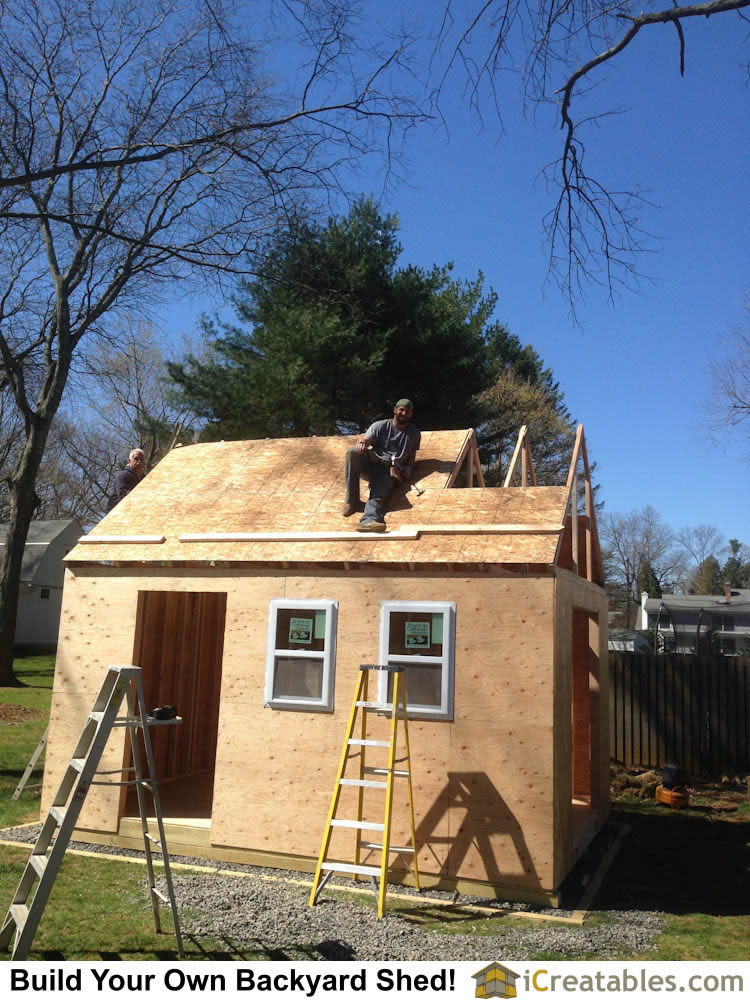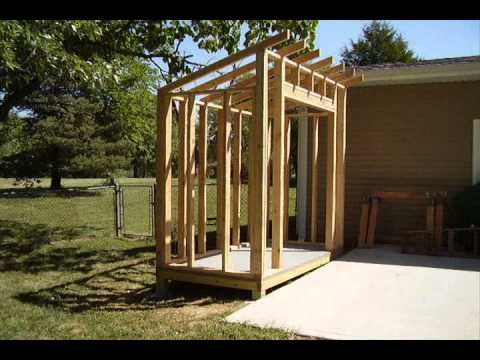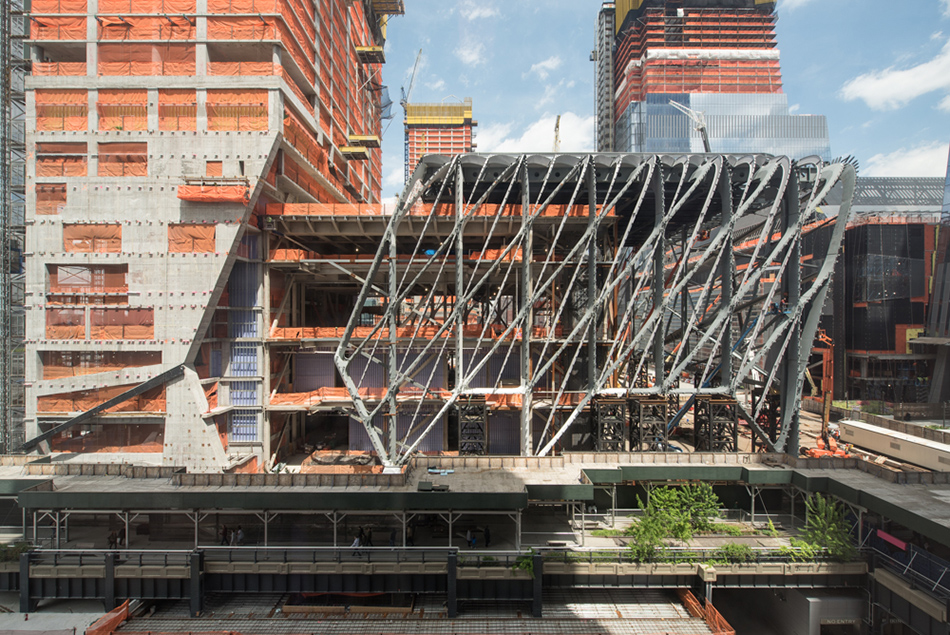Erick Murphi
Friday, August 15, 2025
Best 10x12 Shed Plans with Easy-to-Find Materials
Best 10x12 Shed Plans with Easy-to-Find Materials
Constructing a 10x12 shed offers ample storage space for various needs, from gardening equipment to workshop tools. Choosing the right plan, however, is crucial for a successful and structurally sound build. This article explores several excellent 10x12 shed plans that prioritize the use of readily available materials, ensuring a straightforward and efficient construction process for even novice builders. We will delve into critical aspects of design, material selection, and construction techniques to help you build your ideal shed.
Plan 1: The Classic Gable Shed
The gable roof design is a perennial favorite due to its simplicity, strength, and efficient water runoff. This plan utilizes readily available lumber – primarily pressure-treated 2x4s and 2x6s for the framing, and plywood or OSB for the sheathing. The straightforward construction methodology makes it an ideal choice for beginners.
Foundation Considerations
A solid foundation is paramount. This plan recommends a concrete slab foundation, offering durability and levelness. Alternatively, a gravel base with pressure-treated skids can be used for a less permanent solution. Proper leveling is crucial for both options to ensure structural integrity and prevent future issues. Consider local building codes and soil conditions when selecting a foundation.
Framing and Sheathing
The framing involves constructing a robust floor frame, wall frames, and roof trusses. Detailed diagrams and cut lists in the plan specify the dimensions and quantities of lumber needed. Using pressure-treated lumber for the foundation and sill plates is essential for rot resistance. Plywood or OSB sheathing provides a strong and weather-resistant exterior covering.
Roofing and Siding
Asphalt shingles are an economical and readily available roofing material. Their installation is relatively straightforward, though proper underlayment is necessary for waterproofing. Vinyl siding or metal siding provide durable and low-maintenance exterior cladding options, easily sourced from most home improvement stores.
Doors and Windows
Standard pre-hung doors and windows readily available at building supply stores can be integrated into the design. Selecting appropriate sizes and locations is essential for efficient use of space and natural light. Consider adding extra ventilation if the shed will house items susceptible to moisture or temperature fluctuations.
Plan 2: The Lean-To Shed
The lean-to shed, attached to an existing structure, offers a cost-effective solution, particularly if you need additional storage space adjacent to a garage or house. This design typically utilizes less material than a freestanding gable shed, making it an economical option.
Attachment and Support
Proper attachment to the existing structure is critical. Consult with a structural engineer if you have concerns about the load-bearing capacity of the existing wall. Adequate support beams and anchoring are essential to ensure structural integrity and prevent damage to the main building.
Simplified Framing
The lean-to design simplifies the framing process as it only requires one set of main support walls and rafters. The roof is typically a single slope, minimizing the complexity of the roofing system. This translates to reduced material costs and labor time.
Material Selection
Similar to the gable shed, readily available pressure-treated lumber, plywood, and asphalt shingles are suitable materials. Consider using matching siding to blend the shed seamlessly with the existing structure.
Plan 3: The A-Frame Shed
The A-frame shed boasts a distinct aesthetic appeal, characterized by its simple, triangular shape. This design minimizes material usage and offers excellent drainage. Its simplicity makes it a viable option for those with limited carpentry experience.
Minimal Framing
The A-frame's design relies on two main support beams forming the peak of the roof, which also serve as the main structural components. This minimizes the need for complex framing techniques and reduces the overall lumber requirements.
Versatile Roofing
A variety of roofing materials can be used, including asphalt shingles, metal roofing, or even corrugated plastic sheets, depending on budget and aesthetic preferences. Ensure the chosen material is compatible with the structural design and local climate conditions.
Limited Wall Space
The A-frame's design inherently offers less usable wall space compared to a gable or lean-to shed. This should be factored into storage planning, potentially requiring creative solutions for maximizing interior space.
Choosing the Right Plan and Materials
When selecting a 10x12 shed plan, consider:
- Budget: Evaluate the cost of materials and labor for each plan.
- Skill Level: Choose a plan that matches your construction experience.
- Available Space: Ensure adequate space for construction and the finished shed.
- Local Building Codes: Adhere to all relevant regulations and obtain necessary permits.
- Material Availability: Select plans that use readily available and affordable materials.
Essential Tools and Safety Precautions
Regardless of the chosen plan, assembling a shed requires a set of essential tools. This includes, but isn't limited to, a measuring tape, level, saw (circular saw or hand saw), hammer, drill, screws, nails, and safety glasses. Prioritize safety throughout the construction process. Always wear appropriate personal protective equipment (PPE), including safety glasses, work gloves, and hearing protection. Follow safe practices for handling power tools and lifting heavy materials.
Building a 10x12 shed can be a rewarding experience, offering a valuable addition to your property. By carefully selecting a plan that aligns with your needs and skill level and utilizing readily available materials, you can create a functional and aesthetically pleasing structure that meets your specific requirements. Remember to meticulously follow the plan instructions and prioritize safety throughout the construction process.
Budget-Friendly 10x16 Shed Plans with Shopping List
Building Your Dream Shed on a Budget: 10x16 Plans & Shopping List
Hey there, future shed-owner! So you're dreaming of a 10x16 shed but your wallet's whispering a slightly different tune? Don't worry, you're not alone! Building a shed doesn't have to break the bank. With a little planning and some elbow grease (and maybe a friend or two!), you can totally achieve your shed goals without emptying your savings account. This guide is all about building a budget-friendly 10x16 shed, complete with plans and a shopping list. Let's dive in!
Planning Your Budget-Friendly 10x16 Shed
Before we even think about hammering a nail, we need a solid plan. This isn't just about throwing some wood together; we're building something sturdy and lasting. Let's break down the key elements:
Choosing Your Materials: Smart Choices for Your Wallet
The biggest factor affecting your budget is the materials. You can save a lot by making smart choices. Think pressure-treated lumber for the foundation and framing – it's weather-resistant and will last longer, saving you money in the long run. For the siding, consider something cost-effective like vinyl or metal. While wood looks nice, it requires more maintenance and can be pricier. Don't forget to factor in the cost of screws, nails, and other hardware – these little things add up!
Foundation: Simple and Strong
You don't need an elaborate foundation for a 10x16 shed. A simple concrete slab or even a well-prepared gravel base will work perfectly. A concrete slab offers more stability, but a gravel base is quicker and cheaper. Just ensure the ground is level and compacted to prevent settling later on.
Design Considerations: Keep it Simple, Keep it Affordable
A simple shed design will save you both time and money. Avoid overly complex rooflines or fancy features. A gable roof is a classic and cost-effective choice. Remember, functionality should be your priority at this stage.
Detailed 10x16 Shed Plans
Okay, now for the exciting part – the actual plans! This is a simplified plan, and you might need to adjust it based on your specific needs and local building codes. Always check your local regulations before you start!
Foundation (Gravel Base Option)
- Clear the area and level the ground.
- Lay down a layer of gravel (approximately 4 inches deep).
- Compact the gravel thoroughly using a tamper.
- Lay down a weed barrier fabric to prevent weed growth.
Framing
- Build the base frame using pressure-treated lumber. Make sure it's square and level.
- Erect the wall frames, ensuring they're plumb and properly braced.
- Attach the wall frames to the base frame.
- Construct the roof trusses (or use pre-fabricated trusses for even more savings!).
- Raise and secure the roof trusses to the wall frames.
- Add roof sheathing (plywood or OSB).
Siding and Roofing
- Install your chosen siding material (vinyl or metal are budget-friendly options).
- Install roofing material (asphalt shingles are a cost-effective choice).
- Add gutters and downspouts to direct rainwater away from the shed.
Door and Window Installation
- Install your shed door (consider a pre-hung door to simplify the process).
- Install any windows you've planned for (optional).
Detailed Shopping List
This is an *estimate* and will vary based on material prices in your area and your chosen materials. Always double-check your measurements and add extra for potential waste or mistakes. It's better to have too much than too little!
- Pressure-Treated Lumber: 4x4 posts, 2x4 studs, 2x6 rafters, 2x4 plates, etc. (Quantity will depend on your design – at least 200 linear feet to start)
- Gravel: Approximately 1 cubic yard
- Weed Barrier Fabric: Enough to cover the base area
- Siding: Vinyl or metal siding (calculate square footage needed)
- Roofing Material: Asphalt shingles (calculate square footage needed)
- Plywood or OSB: For roof sheathing (calculate square footage needed)
- Door: Pre-hung shed door (one)
- Windows: (Optional) Calculate based on your plan
- Screws and Nails: Various sizes and types
- Hardware: Hinges, handles, etc.
- Concrete Mix (optional): If you choose a concrete slab foundation
- Tools: Measuring tape, level, saw, hammer, drill, etc.
Frequently Asked Questions (FAQs)
Let's tackle some common questions you might have:
Q: Do I need a building permit?
A: It depends on your local building codes. Check with your local authority to see if a permit is required for a 10x16 shed in your area. It's always better to be safe than sorry!
Q: Can I do this myself, or should I hire someone?
A: You absolutely can do it yourself! However, if you're not comfortable with construction, hiring a handyman or contractor might be a better option. Weigh the cost of labor against the time and effort it will take you to build the shed yourself.
Q: How long will it take to build?
A: The build time depends on your experience and how much time you can dedicate to it each day. Expect it to take several weekends, or even longer if you're working alone.
Q: What if I need to adjust the plans?
A: Absolutely! These plans are a guide. Feel free to adjust them based on your specific needs and preferences, always ensuring you maintain structural integrity.
Q: Where can I find more detailed plans?
A: You can find more detailed plans online, in books, or at home improvement stores. Many offer free or paid plans for various shed designs.
Remember, building a shed is a rewarding experience! Take your time, plan carefully, and don't be afraid to ask for help. With a bit of effort and this guide, you'll be enjoying your new 10x16 shed in no time. Happy building!
Thursday, November 5, 2020
Woodvale shed 10x6 Offer
Imagery Woodvale shed 10x6




How to build a shed manual Cheapest
Foto Results How to build a shed manual


Wednesday, November 4, 2020
Shed base in yard Offer
Visuals Shed base in yard



Hugh woodwork waukegan Closeout
Pictures Hugh woodwork waukegan
Plans lean to shed Closeout
Case in point Plans lean to shed




